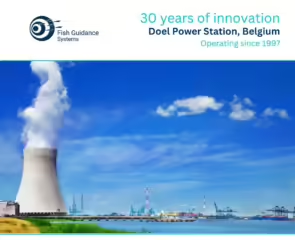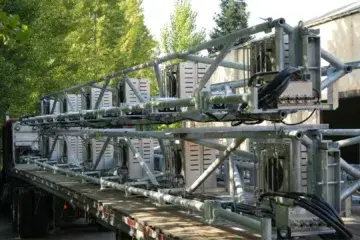Donna Nook is located on the east coast of Lincolnshire, on the southern shore of the outer section of the Humber Estuary. As part of a larger flood defence and environmental improvement scheme in the Humber, an area of 111 hectares of land at Donna Nook was proposed for the creation of a new intertidal habitat to compensate for habitat lost elsewhere in the estuary. The intertidal area was to be created by building new sea defences further inland, at the rear of the site, and breaching the existing sea defences.
The new sea defences were partially located next to the existing Lindsey Marsh Drainage Board Pumping Station at Donna Nook, and in order that the pumping station could still continue to drain the surrounding area the Environment Agency agreed to include the refurbishment of the pumping station in the overall coastal realignment works.
The impact of the pumping station on the resident fish species was reviewed by the Environment Agency and its Project Engineers and a behavioural system was recommended as the most appropriate solution for screening the pumping station. Fish Guidance Systems was therefore requested to provide a suitable system.
Since the pumping station does not operate continually the option of allowing the fish to enter the pumping chamber and use it as a refuge, as occurs at other Environment Agency pumping stations, was considered. However, even though this is desirable at some pumping stations it was decided to be overly complicated to drive the fish out of the pumping chambers before the pumps begin to operate, and so a simpler system across the front of the intake was agreed to be the preferred way forward.
Since eels make up one of the key fish species at the site the fish deflection system was required to comply with the Eels (England and Wales) Regulations 2009, and the system was also required to provide screening for the general population of coarse fish that are also present at the site. As a result FGS proposed a SILAS® (Synchronised Intense Light And Sound) system for the station, to provide the best behavioural screening option available for the mixed population
of fish.
The intake of the pumping station is 6m wide, but then reduces in width as it divides into two pumping chambers, each 2.75m wide. The maximum intake velocity was reported to be 0.28 m/s.
To protect the fish deflection components deployed in the water from the large amounts of weed that can accumulate in front of the intake, the components were positioned behind the trash screen. Usually they would be located as close to the front of the intake as possible, but the Project Engineers were concerned about the access to the components, and so they were located further back than originally proposed, at the entrance to the two pumping chambers.
Three sets of FGS MkII 15-100 Sound Projectors and High Intensity Light Bars were located at the front of each pumping chamber, with each set of components located nominally 1m apart and with the Light Bars deployed vertically to illuminate the full water depth.
The system was installed over two separate visits to enable the pumping station to continue operating and was fully commissioned in July 2013.


